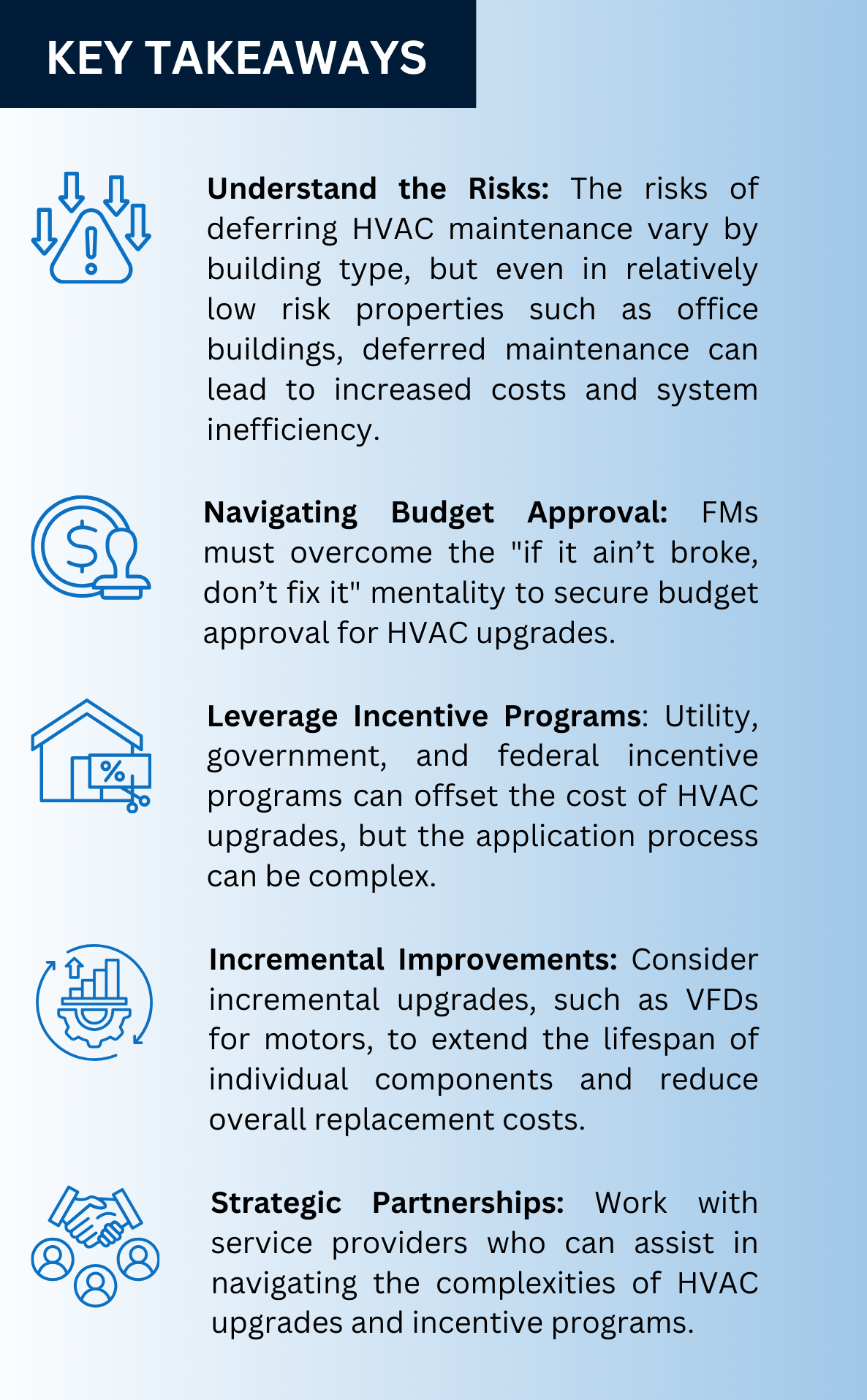by Ronald F. Raymond, founder, RSE Energy Group — March 18, 2025 — As facilities age, so do the 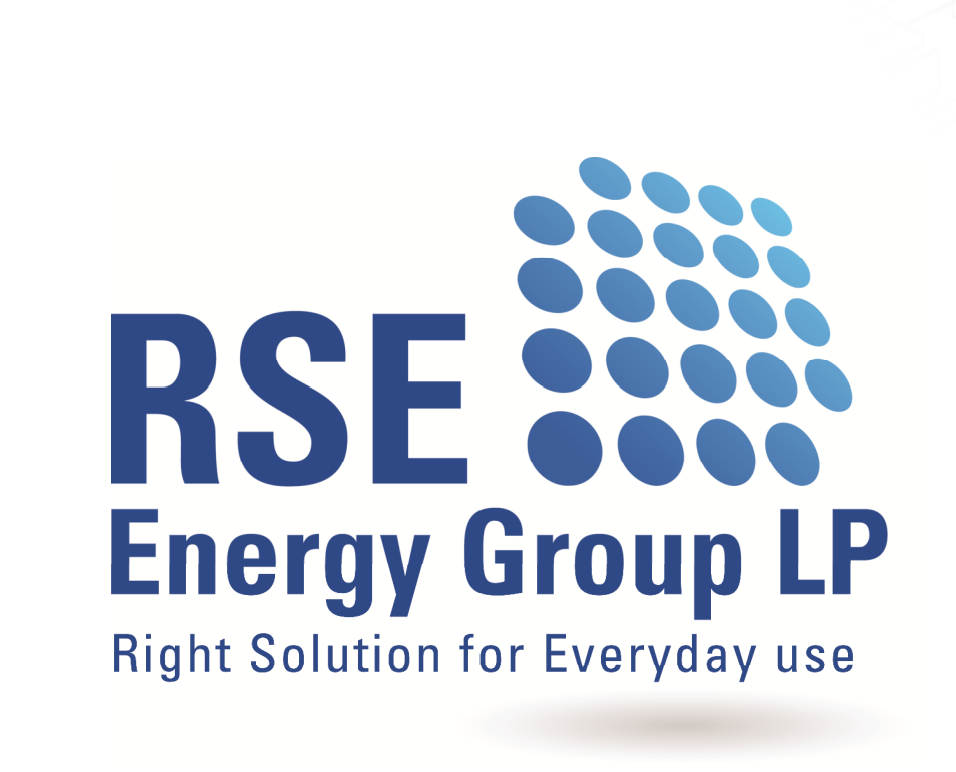 mechanical systems that keep them running efficiently. One of the most critical of all systems is, of course, HVAC (Heating, Ventilation, and Air Conditioning). Not only does the HVAC system play an essential role in maintaining a comfortable and safe environment for occupants, it also protects the integrity of high-value inventory, and in the case of healthcare facilities, ensures safe operating conditions — an absolute matter of life and death. However, more than most elements in the built environment, HVAC systems are often encumbered by deferred maintenance which can lead to higher operating costs, reduced energy efficiency and even catastrophic system failures.
mechanical systems that keep them running efficiently. One of the most critical of all systems is, of course, HVAC (Heating, Ventilation, and Air Conditioning). Not only does the HVAC system play an essential role in maintaining a comfortable and safe environment for occupants, it also protects the integrity of high-value inventory, and in the case of healthcare facilities, ensures safe operating conditions — an absolute matter of life and death. However, more than most elements in the built environment, HVAC systems are often encumbered by deferred maintenance which can lead to higher operating costs, reduced energy efficiency and even catastrophic system failures.
In this article, we’ll explore the risks associated with deferring HVAC maintenance, the challenges of securing budget approval for upgrades, and how building owners and facility managers (FMs) can leverage incentive programs to defray the cost of HVAC system upgrades.
The risks of deferred HVAC maintenance
One of the most significant challenges FMs encounter is deferred maintenance on the HVAC system, the consequences of which can vary widely depending on the type of building and its usage profile.
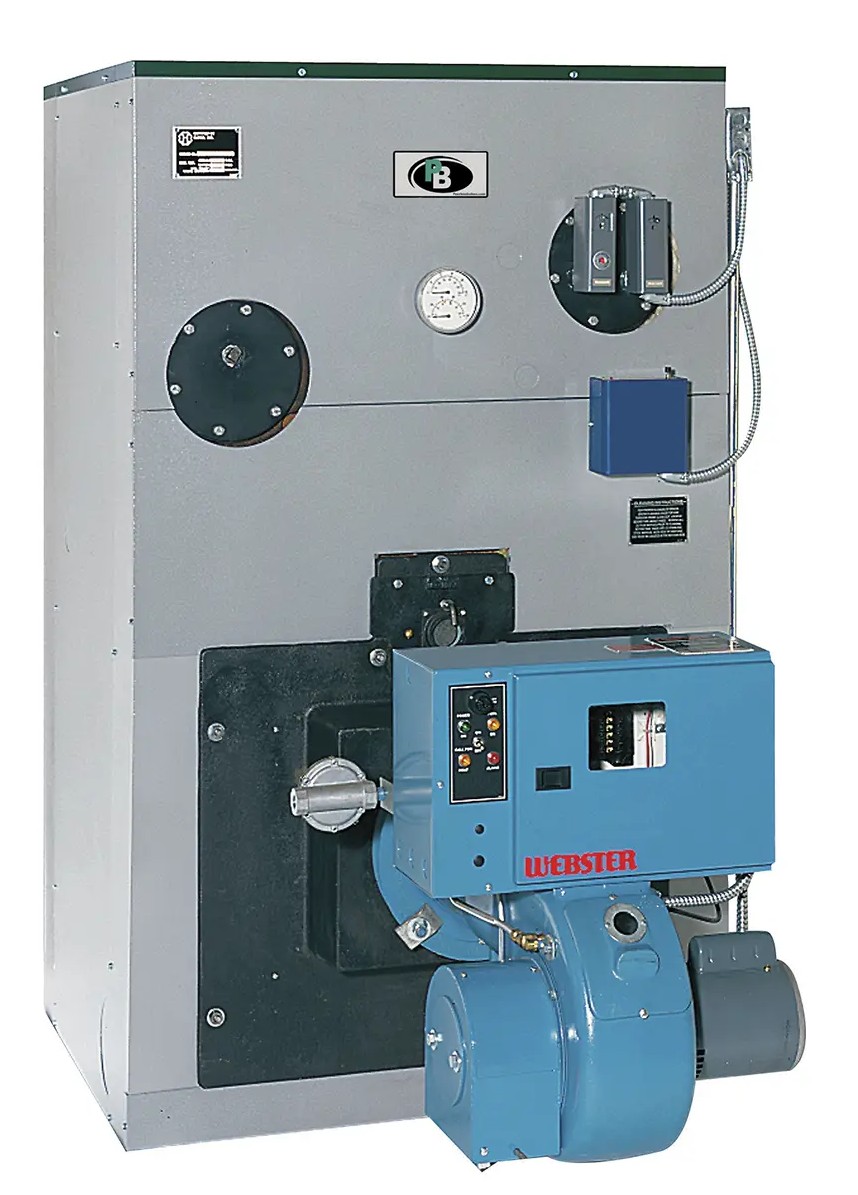
The forced-draft, cast iron LC/LCE boiler series offers 22 commercial sizes available for hot water or steam applications, with thermal efficiencies of up to 83.7%. Image courtesy of Peerless Boilers
For critical care facilities such as hospitals, the risk of deferring HVAC maintenance can impair the institutional mission. For example, a hospital’s HVAC system is responsible for cooling sensitive equipment such as MRI machines, as well as maintaining the climate in data centers that store patient information. In these settings, any HVAC system failure or deferred maintenance can have catastrophic consequences.
On the other hand, office buildings typically have a far lower risk profile in the event of an HVAC failure as the building’s occupancy is usually limited to specific hours and temporary measures such as portable cooling or heating units can mitigate the immediate effects of a system outage. However, even in office buildings, deferring maintenance can still be quite costly in the long run—putting such strain on the system can lead to high emergency repairs. Whether the building is a hospital, office, or manufacturing facility, HVAC systems require regular attention to prevent minor issues from escalating to emergencies.
Challenges of securing budget approval for upgrades
One of the main reasons the HVAC system goes unaddressed until a failure is the difficulty FMs have in securing budget approvals for proper maintenance. The “if it ain’t broke, don’t fix it” mentality often prevails amongst the C-Suite, making it difficult for FMs to justify capital expenditures for servicing equipment that may still be functioning, though it is aging.
HVAC systems are designed to last for 15 to 20 years. During this time, FMs likely do their best to keep these systems running. But as an HVAC system ages, it can become inefficient and prone to breakdowns. However, when everything appears to be “working fine,” it can be quite challenging to convince landlords or upper management to approve the necessary budget for ongoing maintenance and periodic upgrades. Such a mindset often means that HVAC systems are only replaced after a major failure occurs, which leads to higher emergency repair costs, operational disruptions, lost productivity and sometimes lost inventory or research and development data.
Incentive programs are a key to unlocking upgrades funding
The good news is that there are a variety of incentive programs available to building owners and facility managers that can significantly offset the cost of HVAC system upgrades. These incentives include utility rebates, government programs, and federal funding opportunities, listed below. Navigating them can be arduous, however, and the application process requires careful planning and timing to maximize benefits.
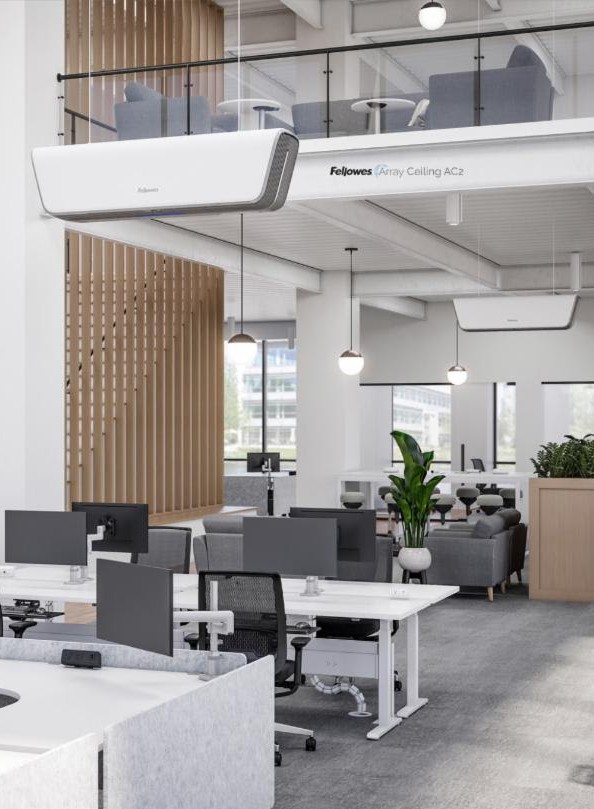
Array networked air quality system reduces energy costs by optimizing air purification processes. Image courtesy of Fellowes
- Utility incentives: Many utility companies offer rebates for upgrading to energy-efficient HVAC systems. These rebates are often tied to specific energy-saving targets, such as reducing a building’s total energy consumption or improving system efficiency, mitigating the negative impact on the environment. These programs may be easier to access for smaller-scale projects.
- Government programs: State government programs offer additional financial support for energy efficiency improvements, yet they also can be complicated to access and may require additional paperwork and property certifications. Still, such programs are an excellent resource for building owners seeking to lower energy consumption.
- Federal programs: At the federal level, incentives such as tax credits and grants are available to encourage the adoption of energy-efficient technologies in commercial buildings. These programs are typically larger in scope and may cover a portion of the overall cost of a major HVAC system upgrade.
Application process considerations
The application process for these incentives is often complex. For the average commercial project, the approval timeline can range from three to six months. Therefore, if an HVAC system has failed or is near failure, FMs must weigh the time required to apply for these incentives against the urgency of the repair.
One of the best ways to navigate the incentive and rebate maze is to work with an independent service provider who understands which incentive programs are applicable to specific building types and system needs. A qualified service provider can streamline the selection and application process while also maximizing the financial benefit, something that is sure to please the C-Suite and property owners.
How much can incentives cover?
One of the principal factors influencing the decision to upgrade an HVAC system is cost. HVAC systems are inherently expensive, and the upfront capital required for a system replacement can be daunting. Incentive programs help mitigate this cost, but the exact amount awarded can vary widely depending on the program and the building type.

Enhanced versions of the Trailblazer AGZ-F air-cooled scroll chiller, Maverick II packaged rooftop system, and SmartSource water source heat pump are optimized for R-32 refrigerant. Image courtesy of Daikin Applied
Incentive programs fall into the following categories:
- Prescriptive programs: These programs offer fixed rebates for specific types of HVAC upgrades, such as replacing a 15-ton unit with a higher-efficiency model. The rebate amount is usually fixed per ton of capacity, making it straightforward to calculate the incentive value.
- Custom programs: For larger or more complex projects, custom programs offer incentives based on energy savings or system performance improvements. These programs require a more detailed application process and often include energy audits or engineering analysis.
- Small Business direct install programs: For smaller businesses, many utilities offer direct install programs that cover a significant portion of the installation cost for energy-efficient HVAC systems. These programs are designed to be simple and accessible, allowing small businesses to improve energy efficiency without upfront costs.
While each program has unique metrics and value, building owners can expect to cover a portion of their HVAC system upgrade costs through these incentives. Additionally, low-interest financing options may be available to further ease the financial burden.
A strategic approach to HVAC upgrades
When approaching HVAC upgrades, it’s essential to consider not only the current state of the system but also the long-term maintenance and operational costs. Building owners and FMs are best advised to take a strategic approach by focusing on whether incremental improvements are possible before undertaking a full system replacement.
Component life expectancy
HVAC systems consist of multiple components, each with a different life expectancy. For example, the motor that drives the fan may last much longer than the compressor that cools the refrigerant. Rather than waiting until the entire system fails, FMs can elect to make incremental improvements, such as adding a Variable Frequency Drive (VFD) to an aging motor to extend its lifespan by three to five years. These small upgrades can improve system efficiency while delaying the need for a complete system replacement.
Long-term planning and immediate needs
While short-term fixes can help keep an aging HVAC system running, building owners must also plan for long-term upgrades. Working with service providers that have the expertise to understand the intricacies of a building’s energy and mechanical systems can ensure that any investment in improvements optimally aligns with both immediate and future needs.
Becoming educated about all possible means to extend an HVAC system’s life expectancy and incentive programs that make repairs financially manageable while improving sustainability is critical for FMs who want to ensure smooth and timely budget approvals from their C-Suite team. Further, FMs may also assist management with efforts to persuade commercial landlords about how critical a high-functioning HVAC system is to their business productivity and profitability, a key consideration in real estate leasing decisions.
While HVAC system upgrades may seem costly and challenging to implement, a combination of strategic planning, leveraging incentives, and making incremental improvements can help improve energy efficiency and sustainability, reduce costs and long-term energy expenses as well as avoid catastrophic system failures that ultimately cost far more than regular maintenance.
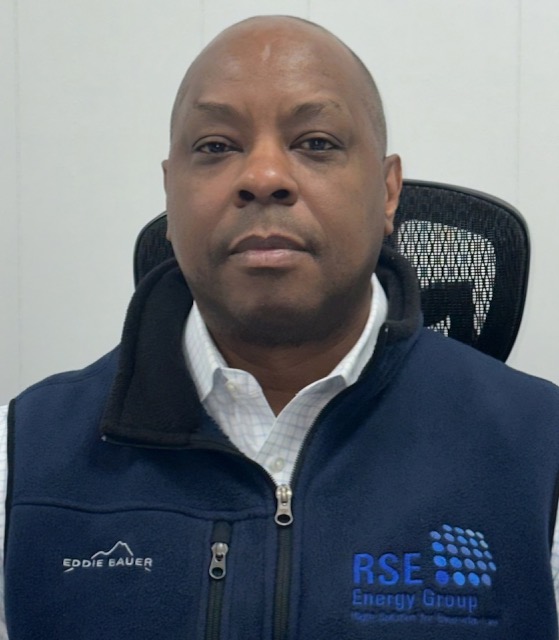
Ronald F. Raymond is the founder of RSE Energy Group, a fast-growing Northeast energy solutions provider serving an array of commercial clients, including real estate developers and property management firms, and the healthcare, hospitality, scientific, manufacturing, office, and retail sectors. He holds a Bachelor of Science degree in Mechanical Engineering from Tuskegee University and has completed NJIT’s Construction/Engineering Management Program and NYU’s SCPS Certification in Building HVAC Design. With over 20 years of experience, Raymond is a licensed professional contractor with expertise in mechanical and HVAC engineering, MEP project management, and energy system installation (ESI). RSE offers a comprehensive approach to evaluating MEP, air quality, energy infrastructure construction, engineering, and project management needs.
